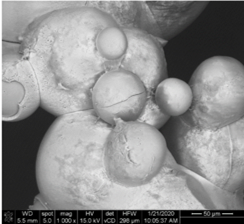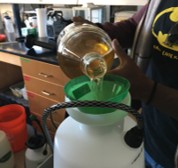 In many coastal areas, dunes represent the first line of defense against flooding from surge and wave attack during a storm. They form a barrier separating the beach and open ocean from landward development and infrastructure. Where needed, vehicle access to the beach is often attained via cuts through the dune line to allow cars and trucks to enter the beach at grade. These cuts, however, generate weak points in a region’s coastal flood prevention scheme because storm waters can easily enter and inundate areas behind the dune line. The engineered dune systems studied here should be able to provide beach access while protecting the inland from flooding.
In many coastal areas, dunes represent the first line of defense against flooding from surge and wave attack during a storm. They form a barrier separating the beach and open ocean from landward development and infrastructure. Where needed, vehicle access to the beach is often attained via cuts through the dune line to allow cars and trucks to enter the beach at grade. These cuts, however, generate weak points in a region’s coastal flood prevention scheme because storm waters can easily enter and inundate areas behind the dune line. The engineered dune systems studied here should be able to provide beach access while protecting the inland from flooding.
 To guarantee both vehicle access and flood protection, natural and engineered dune systems that are being used as coastal surge barriers need to be outfitted with pavement infrastructure that allows vehicles to safely pass over the dune. Depending on location, many constraints may exist that prohibit a permanent bridge or road structure over the dune. In addition, solutions need to take the nature of dunes and their dynamics into account. Dunes are not stationary, but rather adapt to prevailing drivers of change related to water, wind, vegetation, and sediment supply. Any proposed solution needs to minimize impacts to the dune during normal as well as storm conditions without inducing excessive scour or ecosystem damage.
To guarantee both vehicle access and flood protection, natural and engineered dune systems that are being used as coastal surge barriers need to be outfitted with pavement infrastructure that allows vehicles to safely pass over the dune. Depending on location, many constraints may exist that prohibit a permanent bridge or road structure over the dune. In addition, solutions need to take the nature of dunes and their dynamics into account. Dunes are not stationary, but rather adapt to prevailing drivers of change related to water, wind, vegetation, and sediment supply. Any proposed solution needs to minimize impacts to the dune during normal as well as storm conditions without inducing excessive scour or ecosystem damage.
 This project assesses technology options for vehicle dune crossings, tests short-listed bio-cementation options such as microbially induced calcium carbonate precipitation (MICP), enzyme-induced carbonate precipitation (EICP), or biopolymers for erosion resistance and vehicular loading conditions, and optimizes respective treatment recipes through lab experiments including tri-axial column and moveable bed wave flume tests.
This project assesses technology options for vehicle dune crossings, tests short-listed bio-cementation options such as microbially induced calcium carbonate precipitation (MICP), enzyme-induced carbonate precipitation (EICP), or biopolymers for erosion resistance and vehicular loading conditions, and optimizes respective treatment recipes through lab experiments including tri-axial column and moveable bed wave flume tests.
